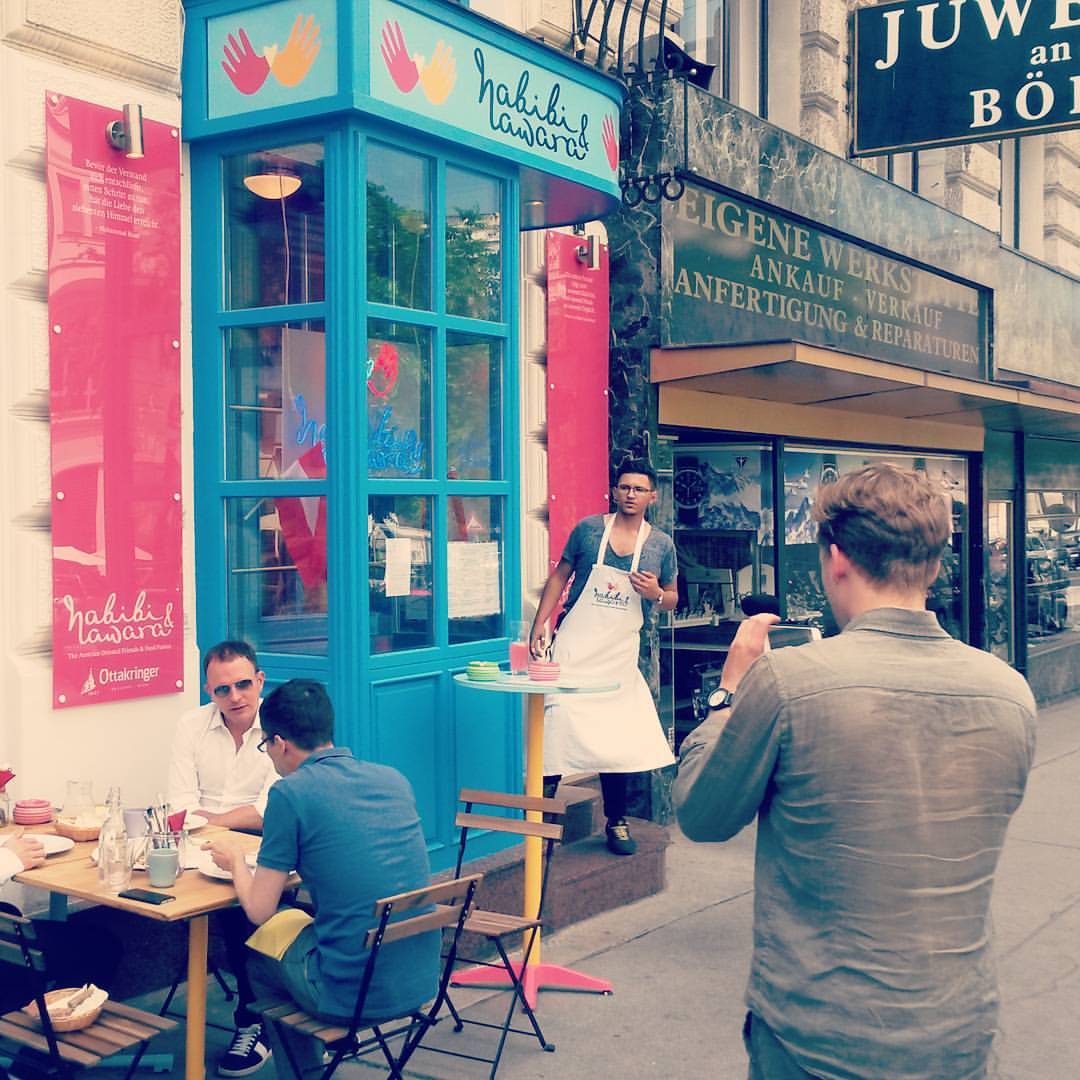
Integrational projects in Munich and Vienna
(Day 18)
“Integration? It’s a peace of cake for me. I go out, talk to people. And I love Vienna. I have a nice job and made many friends. The most amazing place for me during the day and sometimes during the night – because summer here is not always summer – is Prater. Laying on the grass, enjoying the calm. I like it.”
– Paula worked the past seven years as a manager of a beauty centre in Damascus and is now a waitress at Habibi & Hawara in Vienna
How can Europe integrate the heightened influx of refugees arriving in the long-term? And what actions do we have to take ‘on our part’ to accomodate successful relations and a growing together? These were questions which were high in the news headlines during the last year. Timo and I spent the last few days exploring how the integration process can be designed from within western societies. We visited people and organizations that symbolize the whole process, from first arrival to a long-term future as an individual person.
Last Tuesday we spoke with Mustafa K. Isik in Munich. He is the head designer of the app ‘Ankommen’. It provides information about the legal asylum process, job procedures and about traditions and customs in German society from a neutral point of view, among many other things. With over 150.000 combined downloads it helps refugees and aid workers alike to ease the struggle of arriving in a new and unknown state on a daily basis for everyone involved. In our interview we also touched upon how important the smartphone is for someone fleeing a country in the digital age and how it simplifies the processes for everyone involved, including the potential host countries. The theme of the interview: Integration 2.0.
Benjamin Fritz, founding member of Train of Hope met up with us at the Vienna central station and informed us about their work during last fall, where at peak times over 5000 refugees passed through the train station daily. Benjamin and his friends started passing out water one day with a few wooden benches. Four weeks later, supported by countless volunteers, they were providing health, legal and psychological advice, fed the hungry and clothed every refugee in need.
We were also invited for a culinary experience of integration at the restaurant Habibi & Hawara in Vienna. Run by former refugees and local chefs in collaboration it showed us how long-term integration can look like.
Happy. Thank you. More please. transitioned from coordinating urgent clothing donations in 2015 into a Happy Market, where refugee families and asylum seekers can now make an appointment. Guided by volunteers they then have an hour to pick and choose from ther warehouse what they really need. It looks like a store, with changing rooms and everything.
Timo and I were impressed by all those volunteers and their engagement with and devotion for the refugee ‘crisis’. We also saw again that integration is a long-term process which requires both the people on any side to overcome differences and undertake the first step towards each others’ culture together.
One Reply to “Integrational projects in Munich and Vienna”
Hello, I’m Julia and with 3 friends I’m planning a similar tour you did with an VW Bus in September starting from Austria through the Balkan to Greece.
The idea came from Madeleine who writes her master thesis about. We will film our trip in order to make a documentary. Is it possible to get in direct contact with you?